Time Travel Omnibus Volume 1 Read online
Page 2
Through the wormhole, the scientist can see himself as he was one minute ago. But what if our scientist uses the wormhole to shoot his earlier self? He’s now dead. So who fired the shot? It’s a paradox. It just doesn’t make sense. It’s the sort of situation that gives cosmologists nightmares.
This kind of time machine would violate a fundamental rule that governs the entire universe—that causes happen before effects, and never the other way around. I believe things can’t make themselves impossible. If they could then there’d be nothing to stop the whole universe from descending into chaos. So I think something will always happen that prevents the paradox. Somehow there must be a reason why our scientist will never find himself in a situation where he could shoot himself. And in this case, I’m sorry to say, the wormhole itself is the problem.
In the end, I think a wormhole like this one can’t exist. And the reason for that is feedback. If you’ve ever been to a rock gig, you’ll probably recognise this screeching noise. It’s feedback. What causes it is simple. Sound enters the microphone. It’s transmitted along the wires, made louder by the amplifier, and comes out at the speakers. But if too much of the sound from the speakers goes back into the mic it goes around and around in a loop getting louder each time. If no one stops it, feedback can destroy the sound system.
The same thing will happen with a wormhole, only with radiation instead of sound. As soon as the wormhole expands, natural radiation will enter it, and end up in a loop. The feedback will become so strong it destroys the wormhole. So although tiny wormholes do exist, and it may be possible to inflate one some day, it won’t last long enough to be of use as a time machine. That’s the real reason no one could come back in time to my party.
Any kind of time travel to the past through wormholes or any other method is probably impossible, otherwise paradoxes would occur. So sadly, it looks like time travel to the past is never going to happen. A disappointment for dinosaur hunters and a relief for historians.
But the story’s not over yet. This doesn’t make all time travel impossible. I do believe in time travel. Time travel to the future. Time flows like a river and it seems as if each of us is carried relentlessly along by time’s current. But time is like a river in another way. It flows at different speeds in different places and that is the key to travelling into the future. This idea was first proposed by Albert Einstein over 100 years ago. He realised that there should be places where time slows down, and others where time speeds up. He was absolutely right. And the proof is right above our heads. Up in space.
This is the Global Positioning System, or GPS. A network of satellites is in orbit around Earth. The satellites make satellite navigation possible. But they also reveal that time runs faster in space than it does down on Earth. Inside each spacecraft is a very precise clock. But despite being so accurate, they all gain around a third of a billionth of a second every day. The system has to correct for the drift, otherwise that tiny difference would upset the whole system, causing every GPS device on Earth to go out by about six miles a day. You can just imagine the mayhem that that would cause.
The problem doesn’t lie with the clocks. They run fast because time itself runs faster in space than it does down below. And the reason for this extraordinary effect is the mass of the Earth. Einstein realised that matter drags on time and slows it down like the slow part of a river. The heavier the object, the more it drags on time. And this startling reality is what opens the door to the possibility of time travel to the future.
Right in the centre of the Milky Way, 26,000 light years from us, lies the heaviest object in the galaxy. It is a supermassive black hole containing the mass of four million suns crushed down into a single point by its own gravity. The closer you get to the black hole, the stronger the gravity. Get really close and not even light can escape. A black hole like this one has a dramatic effect on time, slowing it down far more than anything else in the galaxy. That makes it a natural time machine.
I like to imagine how a spaceship might be able to take advantage of this phenomenon, by orbiting it. If a space agency were controlling the mission from Earth they’d observe that each full orbit took 16 minutes. But for the brave people on board, close to this massive object, time would be slowed down. And here the effect would be far more extreme than the gravitational pull of Earth. The crew’s time would be slowed down by half. For every 16-minute orbit, they’d only experience eight minutes of time.
Inside the Large Hadron Collider
Around and around they’d go, experiencing just half the time of everyone far away from the black hole. The ship and its crew would be travelling through time. Imagine they circled the black hole for five of their years. Ten years would pass elsewhere. When they got home, everyone on Earth would have aged five years more than they had.
So a supermassive black hole is a time machine. But of course, it’s not exactly practical. It has advantages over wormholes in that it doesn’t provoke paradoxes. Plus it won’t destroy itself in a flash of feedback. But it’s pretty dangerous. It’s a long way away and it doesn’t even take us very far into the future. Fortunately there is another way to travel in time. And this represents our last and best hope of building a real time machine.
You just have to travel very, very fast. Much faster even than the speed required to avoid being sucked into a black hole. This is due to another strange fact about the universe. There’s a cosmic speed limit, 186,000 miles per second, also known as the speed of light. Nothing can exceed that speed. It’s one of the best established principles in science. Believe it or not, travelling at near the speed of light transports you to the future.
To explain why, let’s dream up a science-fiction transportation system. Imagine a track that goes right around Earth, a track for a superfast train. We’re going to use this imaginary train to get as close as possible to the speed of light and see how it becomes a time machine. On board are passengers with a one-way ticket to the future. The train begins to accelerate, faster and faster. Soon it’s circling the Earth over and over again.
To approach the speed of light means circling the Earth pretty fast. Seven times a second. But no matter how much power the train has, it can never quite reach the speed of light, since the laws of physics forbid it. Instead, let’s say it gets close, just shy of that ultimate speed. Now something extraordinary happens. Time starts flowing slowly on board relative to the rest of the world, just like near the black hole, only more so. Everything on the train is in slow motion.
This happens to protect the speed limit, and it’s not hard to see why. Imagine a child running forwards up the train. Her forward speed is added to the speed of the train, so couldn’t she break the speed limit simply by accident? The answer is no. The laws of nature prevent the possibility by slowing down time onboard.
Now she can’t run fast enough to break the limit. Time will always slow down just enough to protect the speed limit. And from that fact comes the possibility of travelling many years into the future.
Imagine that the train left the station on January 1, 2050. It circles Earth over and over again for 100 years before finally coming to a halt on New Year’s Day, 2150. The passengers will have only lived one week because time is slowed down that much inside the train. When they got out they’d find a very different world from the one they’d left. In one week they’d have travelled 100 years into the future. Of course, building a train that could reach such a speed is quite impossible. But we have built something very like the train at the world’s largest particle accelerator at CERN in Geneva, Switzerland.
Deep underground, in a circular tunnel 16 miles long, is a stream of trillions of tiny particles. When the power is turned on they accelerate from zero to 60,000 mph in a fraction of a second. Increase the power and the particles go faster and faster, until they’re whizzing around the tunnel 11,000 times a second, which is almost the speed of light. But just like the train, they never quite reach that ultimate speed. They can only get to 99.99 per cent
of the limit. When that happens, they too start to travel in time. We know this because of some extremely short-lived particles, called pi-mesons. Ordinarily, they disintegrate after just 25 billionths of a second. But when they are accelerated to near-light speed they last 30 times longer.
It really is that simple. If we want to travel into the future, we just need to go fast. Really fast. And I think the only way we’re ever likely to do that is by going into space. The fastest manned vehicle in history was Apollo 10. It reached 25,000mph. But to travel in time we’ll have to go more than 2,000 times faster. And to do that we’d need a much bigger ship, a truly enormous machine. The ship would have to be big enough to carry a huge amount of fuel, enough to accelerate it to nearly the speed of light. Getting to just beneath the cosmic speed limit would require six whole years at full power.
The initial acceleration would be gentle because the ship would be so big and heavy. But gradually it would pick up speed and soon would be covering massive distances. In one week it would have reached the outer planets. After two years it would reach half-light speed and be far outside our solar system. Two years later it would be travelling at 90 per cent of the speed of light. Around 30 trillion miles away from Earth, and four years after launch, the ship would begin to travel in time. For every hour of time on the ship, two would pass on Earth. A similar situation to the spaceship that orbited the massive black hole.
After another two years of full thrust the ship would reach its top speed, 99 per cent of the speed of light. At this speed, a single day on board is a whole year of Earth time. Our ship would be truly flying into the future.
The slowing of time has another benefit. It means we could, in theory, travel extraordinary distances within one lifetime. A trip to the edge of the galaxy would take just 80 years. But the real wonder of our journey is that it reveals just how strange the universe is. It’s a universe where time runs at different rates in different places. Where tiny wormholes exist all around us. And where, ultimately, we might use our understanding of physics to become true voyagers through the fourth dimension.
3 RMS, GOOD VIEW
Karen Haber
“Apartment for rent,” said the net ad. “3 rms, gd view. Potrero Hill area, $1200 a month, utilities pd.”
It sounded like a dream. Every San Francisco apartment I had seen in the last six months had waiting lists for their waiting lists.
“Southern exp. Pets OK.”
Better and better.
Then I found the catch. The apartment was available, all right. In 1968.
Don’t misunderstand me. I’m not one of those with a temporal bias. And God knows, I’ve always wanted to live in San Francisco.
I first came north in ’07 on a family expedition to the Retro-Pan-Pacific Exposition. The fair was fun, but what I loved even better was San Francisco: the sunswept hillsides, the streets lined with bright flower boxes, the digitalized ding-a-ling of the streetcar bells floating in the cool air, the fog creeping in at dusk. Heaven, especially after thirteen summers spent baking in the San Fernando Valley. I vowed to come back.
It took me seventeen years and a divorce, but I did it. Right after I graduated from Boalt and passed the bar.
Unfortunately, housing was tight—in fact, strangulated. The city had instituted severe building restrictions back in ’03 and got what it asked for: all residential construction not only stopped but vanished, gone eastward to the greener pastures of Contra Costa County.
I got on the waiting list of every real estate agent in the Bay Area, but the best digs I would find was a studio apartment—more like a large walk-in closet with plumbing—in a renovated duplex in Yuba City. Add on a three-hour commute to my job in San Francisco’s financial district, and we’re not exactly talking about positive quality of life.
So when I saw the net ad, I jumped. And stopped in midair. As I said, I have no temporal biases. But I’m not one of those sentimental history nuts just dying to travel back to the Crucifixion, either. I like real time just fine, thank you. Always have. It’s a peculiar trait, considering my family.
My grandmother lives in 1962, and has for the last ten years. She said it was the last time that America believed in itself as a country. And it’s safe. She likes the peace and quiet of the pre-computer era. “Loosen up, Chrissy,” she said to me before she left. “You should be more flexible. There’s nothing wrong with living in the past.”
My brother lives in 1997 where he’s pierced his nose, lip, eyebrows, and had his scalp tattooed in concentric circles of red and black. Every now and then I get a note from him through e-mail: “Come visit. We’ll hit the clubs. Don’t you ever take a vacation? I thought girls wanted to have fun.”
As for Mom, well, she likes 1984. But then, she always did have an odd sense of humor.
Pardon me if I like realtime best. I’ve always had my feet planted firmly in the present. Practical, sturdy Christine. In the lofty hierarchy of Mount Olympus, I’d be placed just to the left of Zeus in the marble frieze, in the Athena position. Yes, I even have the gray eyes and brown hair to go with the no-nonsense attitude. I’m tall and muscular, as befits your basic warrior goddess/business attorney type. My stature is useful, too—who wants a lawyer who doesn’t look intimidating?
And I’ve never wanted to go backward. We all remember the first reports of time-travel glitches. Shari, one of my prelaw classmates at Berkeley, wanted to spend her Christmas break in the village where her French great-great-great-grandmother lived. But a power surge from Sacramento sent her to the fourteenth century instead. Talk about your bad neighborhoods. If she hadn’t gotten her shots before she left—complaining all the way—she’d probably have come back sporting buboes the size and color of rotten nectarines.
After Shari’s brush with the Black Death, I told myself I was immune to the allure of era-hopping. I ignored the net ads for Grand Tours: the Crucifixion and sack of Rome package, $1,598. Dark Ages through the Enlightenment, two weeks for $2,100, all meals and tips included. (These packages are especially popular with the Japanese, who have become time-travel junkies. And why not? They can go away and come back without losing any realtime at work.)
Even when the Koreans made portable transport units for home or office, I shrugged and stuck by realtime. But when I saw the listing in the paper, I looked around the stucco walls of my apartment/cell and threw all my sturdy, practical notions to the wind. An apartment on Potrero Hill? In a nanosecond, Pallas Athena transmuted into impulsive Mercury.
My hands trembled with excitement and impatience as I sent my credit history to Jerry Raskin, the real estate agent listed on the ad. Almost immediately I received an appointment to view the apartment. This Raskin sure didn’t waste any time.
We met at his office in the Tenderloin. He was a short man, barely reaching my shoulder, with thinning dark hair and a doughy nose that looked like a half-baked biscuit. A matte black Mitsubishi temp transport unit sat behind his desk. I stared at it uneasily.
“Want to look over the premises?” he asked. He gestured toward the unit.
“Uh, yes. Of course.” I took a deep breath and stepped over the threshold of the transport.
There was a sudden fragmentation of color, of sound. I was in a high white space, falling. I was stepping into an apartment on Potrero Hill, shaking my head in wonder.
Even before the shimmering transport effect had diminished, Jerry had launched into his sales pitch. “It’s a gem,” he said proudly. “I hardly ever get this kind of listing.” He flicked an invisible piece of lint from the shoulder of his green silk suit. “Once every five years.”
It was perfect. Big sunny rooms paneled in pine, full of light, ready for plants. Hardwood floors. There was even a little balcony off the bedroom where I could watch the fog drift in over Twin Peaks in the summer afternoons.
All wound up and oblivious to my rapture, Raskin rattled on. “You can install a transport unit in the closet for your morning and evening commute to realtime. It’s a stea
l. What’s your rail commute cost from Yuba City?”
I didn’t need much convincing. “I’ll take it.”
“Two year lease,” he said. “Sign here.” Then he brandished an additional piece of paper. “This too.”
“What is it?” I was Pallas Athena again, staring down suspiciously onto the sweaty center of his bald spot. “If this is a pet restriction clause, I’m going to protest. Your ad didn’t say anything about it. I’ve got a cat.” I didn’t bother to mention that I kept MacHeath at work—there was more room for him there than at home. But wherever—and whenever—I went, he went.
“Sure, sure,” Raskin said. “You can keep your kitty as long as you pay a deposit. This is just your standard noninterference contract.”
“Noninterference contract?”
He looked at me like I was stupid. It rarely happens. When it does, I don’t like it.
“You know,” he said, and recited in a sing-song voice: “Don’t change the past or the past will change you. The time laws. You lawyers understand this kind of thing. You, and you alone, are responsible for any dislocation of past events, persons or things, et cetera, et cetera. Read the small print and sign.”
A sudden chill teased my upper vertebrae. Noninterference? Well, why would I interfere with the past? The morning sunlight streamed in through the big window in the front room. High clouds scudded over the hillside. I shook off the shivers and signed.
A week later, I took up residence, hanging my tiny collection of photos, putting down rugs, and glorying in my privacy. MacHeath didn’t care much for the transport effect but he approved of his new improved situation. After sniffing every corner of the place, he made an appointment with the sun and spent the rest of the day following it from window to window.
Life’s pendulum swung me between work and home, uptime and downtime, in an easy arc. Thanks to the transport I could leave the house at any time of day and return a moment later. This made for a great deal of quality time, spent snuggled up with MacHeath on the red corduroy sofa, and on my own in the heart of a smaller, cozier city. I wandered gratefully along the waterfront, bought sourdough bread and lingered over coffee in North Beach jazz clubs. Everywhere was color and life and music: garish psychedelic posters printed in what I think were called Day-Glo inks, announcing musical groups with odd names like the Jackson’s Airplane. Shaggy-haired, brightly dressed, childishly friendly people piled in casual groups on the street, in buses, and in the old houses lining Haight Street and Ashbury. I fell in love with the past—at least with San Francisco’s past.

![[What Might Have Been 02] Alternate Heroes Read online](http://i1.bookreadfree.com/27/what_might_have_been_02_alternate_heroes_preview.jpg) [What Might Have Been 02] Alternate Heroes
[What Might Have Been 02] Alternate Heroes![[What Might Have Been 01] Alternate Empires Read online](http://i1.bookreadfree.com/01/what_might_have_been_01_alternate_empires_preview.jpg) [What Might Have Been 01] Alternate Empires
[What Might Have Been 01] Alternate Empires SEDUCTIVE: A Contemporary Romance Anthology
SEDUCTIVE: A Contemporary Romance Anthology A Year of Love
A Year of Love Super Daddies: A Naughty Nerdy Romantic Comedy Anthology
Super Daddies: A Naughty Nerdy Romantic Comedy Anthology Mystical Xmas: Paranormal Romance Anthology Box Set
Mystical Xmas: Paranormal Romance Anthology Box Set![[What Might Have Been 04] Alternate Americas Read online](http://i1.bookreadfree.com/06/what_might_have_been_04_alternate_americas_preview.jpg) [What Might Have Been 04] Alternate Americas
[What Might Have Been 04] Alternate Americas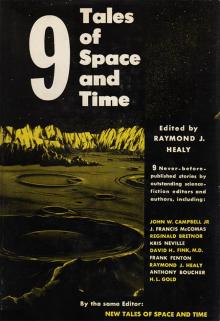 9 Tales of Space and Time
9 Tales of Space and Time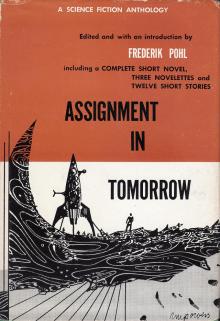 Assignment in Tomorrow
Assignment in Tomorrow![[What Might Have Been 03] Alternate Wars Read online](http://i1.bookreadfree.com/i/03/16/what_might_have_been_03_alternate_wars_preview.jpg) [What Might Have Been 03] Alternate Wars
[What Might Have Been 03] Alternate Wars The Complete Dangerous Visions
The Complete Dangerous Visions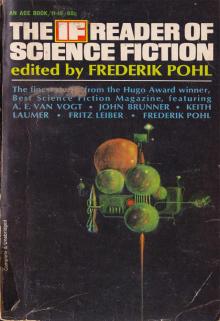 The IF Reader of Science Fiction
The IF Reader of Science Fiction Holiday in the Heart
Holiday in the Heart Torquere Press Sips and Shots
Torquere Press Sips and Shots Possess: An Alpha Anthology
Possess: An Alpha Anthology Beyond Control
Beyond Control Bad Boys Under the Mistletoe: A Begging for Bad Boys Collection
Bad Boys Under the Mistletoe: A Begging for Bad Boys Collection Hugo Awards: The Short Stories (Volume 3)
Hugo Awards: The Short Stories (Volume 3) The Second IF Reader of Science Fiction
The Second IF Reader of Science Fiction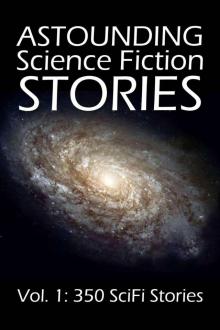 Astounding Science Fiction Stories Vol 1
Astounding Science Fiction Stories Vol 1 What Happens Over Spring Break: A Short Story Anthology
What Happens Over Spring Break: A Short Story Anthology eSteampunk Vol. 01 No. 02
eSteampunk Vol. 01 No. 02 SHADOWRUN: Spells and Chrome (shadowrun)
SHADOWRUN: Spells and Chrome (shadowrun) Dark Tales
Dark Tales Getting Schooled (Craving #9)
Getting Schooled (Craving #9) The Hellfire Book of Beltane Volume One
The Hellfire Book of Beltane Volume One The Alpha's
The Alpha's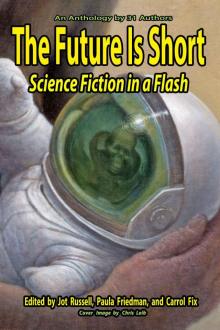 The Future Is Short
The Future Is Short From the Heart: A Valentine's Day Anthology
From the Heart: A Valentine's Day Anthology Reckless: A Bad Boyz Anthology
Reckless: A Bad Boyz Anthology LOL #3 Romantic Comedy Anthology
LOL #3 Romantic Comedy Anthology A Christmas Seduction: A Regency Anthology
A Christmas Seduction: A Regency Anthology All a Cowboy Wants for Christmas
All a Cowboy Wants for Christmas Hugo Awards: The Short Stories (Volume 2)
Hugo Awards: The Short Stories (Volume 2)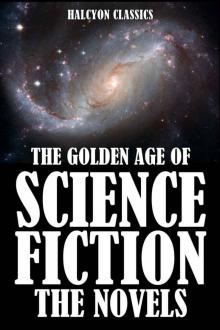 The Golden Age of Science Fiction Novels Vol 01
The Golden Age of Science Fiction Novels Vol 01 The Sirens of SaSS Anthology
The Sirens of SaSS Anthology Mistletoe & Kisses
Mistletoe & Kisses Explorers of Space
Explorers of Space Time Travel Omnibus Volume 2
Time Travel Omnibus Volume 2 Dead Science: A Zombie Anthology
Dead Science: A Zombie Anthology Beer Goggles Anthology
Beer Goggles Anthology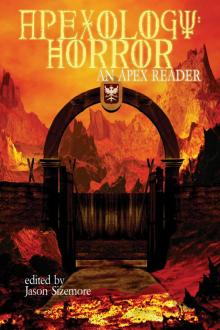 Apexology: Horror
Apexology: Horror Heat Wave: A Summer Loving Anthology
Heat Wave: A Summer Loving Anthology Fall in Love
Fall in Love Love Under the Mistletoe
Love Under the Mistletoe Hook & Ladder 69: Eighteen Authors...One Sexy Firehouse.
Hook & Ladder 69: Eighteen Authors...One Sexy Firehouse. LOL #2 Romantic Comedy Anthology - Volume 2 - Even More All-New Romance Stories by Bestselling Authors (LOL Romantic Comedy Anthology #2)
LOL #2 Romantic Comedy Anthology - Volume 2 - Even More All-New Romance Stories by Bestselling Authors (LOL Romantic Comedy Anthology #2)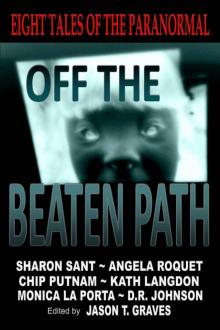 Off the Beaten Path: Eight Tales of the Paranormal
Off the Beaten Path: Eight Tales of the Paranormal![Best New Zombie [3] - Best New Zombie Tales, Vol. 3 Read online](http://i1.bookreadfree.com/i/03/25/best_new_zombie_3_-_best_new_zombie_tales_vol_3_preview.jpg) Best New Zombie [3] - Best New Zombie Tales, Vol. 3
Best New Zombie [3] - Best New Zombie Tales, Vol. 3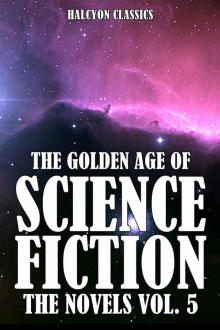 The Golden Age of Science Fiction Novels Vol 05
The Golden Age of Science Fiction Novels Vol 05 Alphas of Sin
Alphas of Sin Halloween Spirits: 11 Tales for the Darkest Night
Halloween Spirits: 11 Tales for the Darkest Night Night Shift 2
Night Shift 2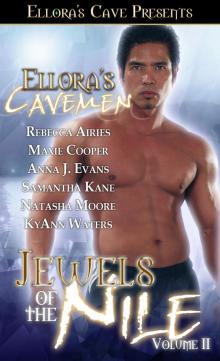 Ellora's Cavemen: Jewels of the Nile II
Ellora's Cavemen: Jewels of the Nile II Hot for the Holidays (21 Holiday Short Stories): A Collection of Naughty and Nice Holiday Romances
Hot for the Holidays (21 Holiday Short Stories): A Collection of Naughty and Nice Holiday Romances Of Heaven and Hell
Of Heaven and Hell 12 Christmas Romances To Melt Your Heart
12 Christmas Romances To Melt Your Heart '90s Playlist (Romance Rewind #1)
'90s Playlist (Romance Rewind #1) Bleed Blue 69: Twenty-Five Authors…One Sexy Police Station
Bleed Blue 69: Twenty-Five Authors…One Sexy Police Station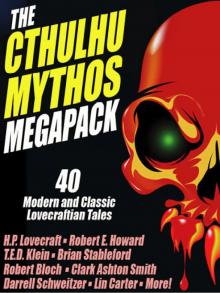 The Cthulhu Mythos Megapack (40 Modern and Classic Lovecraftian Tales)
The Cthulhu Mythos Megapack (40 Modern and Classic Lovecraftian Tales)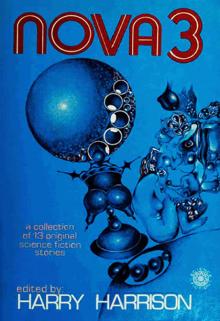 Nova 3
Nova 3 Unbroken: 13 Stories Starring Disabled Teens
Unbroken: 13 Stories Starring Disabled Teens Dead Men (and Women) Walking
Dead Men (and Women) Walking Sweet Seduction
Sweet Seduction Brothel: The Magnolia Diaries
Brothel: The Magnolia Diaries Rogues (A Boys Behaving Badly Anthology #1)
Rogues (A Boys Behaving Badly Anthology #1) Best New Zombie Tales, Vol. 3
Best New Zombie Tales, Vol. 3![The Hellfire Bo [1] - The Hellfire Book of Beltane Volume One Read online](http://i1.bookreadfree.com/i1/04/06/the_hellfire_bo_1_-_the_hellfire_book_of_beltane_volume_one_preview.jpg) The Hellfire Bo [1] - The Hellfire Book of Beltane Volume One
The Hellfire Bo [1] - The Hellfire Book of Beltane Volume One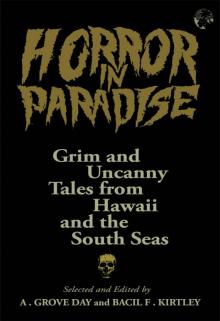 Horror in Paradise
Horror in Paradise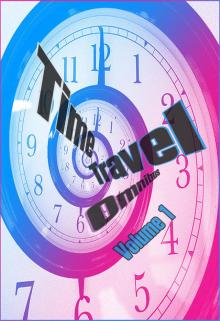 Time Travel Omnibus Volume 1
Time Travel Omnibus Volume 1 More Than Words: Stories of Courage
More Than Words: Stories of Courage River Walk: Ten Kinky Collaborations
River Walk: Ten Kinky Collaborations F*cking Awkward
F*cking Awkward Hearts of England
Hearts of England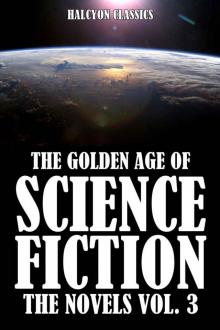 The Golden Age of Science Fiction Novels Vol 03
The Golden Age of Science Fiction Novels Vol 03 Drunk in Love
Drunk in Love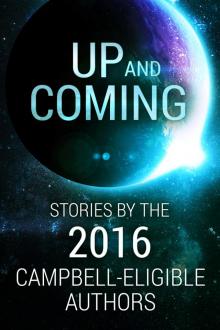 Up and Coming: Stories by the 2016 Campbell-Eligible Authors
Up and Coming: Stories by the 2016 Campbell-Eligible Authors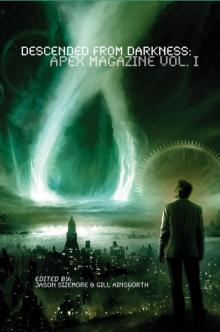 Descended from Darkness: Apex Magazine Vol I
Descended from Darkness: Apex Magazine Vol I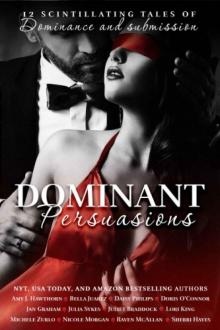 Dominant Persuasions Anthology: 12 Tales of D/s, Where Mastery Meets Passion
Dominant Persuasions Anthology: 12 Tales of D/s, Where Mastery Meets Passion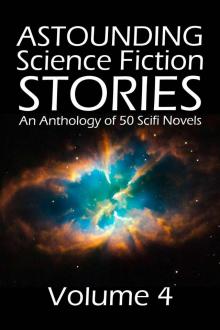 The Golden Age of Science Fiction Novels Vol 04
The Golden Age of Science Fiction Novels Vol 04 Passion in Portland 2016 Anthology
Passion in Portland 2016 Anthology Men of Mayhem
Men of Mayhem The Dirty Anthology
The Dirty Anthology Hot For Teacher
Hot For Teacher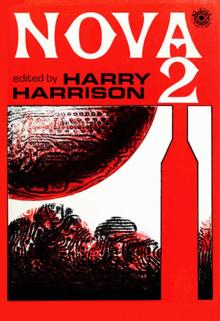 Nova 2
Nova 2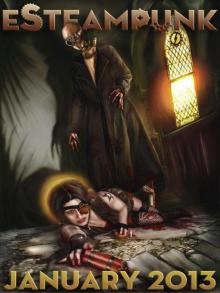 eSteampunk Vol. 01 No. 03
eSteampunk Vol. 01 No. 03 Afternoon Tea Mysteries Vol Three
Afternoon Tea Mysteries Vol Three Romance in the Rain
Romance in the Rain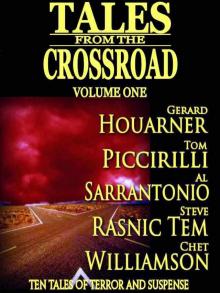 Tales From the Crossroad Volume 1
Tales From the Crossroad Volume 1 A Very Alpha Christmas
A Very Alpha Christmas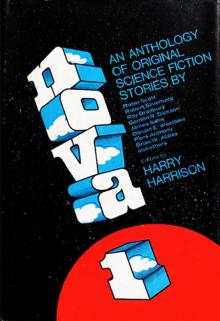 Nova 1
Nova 1 Once: A Collection of Sinfully Sexy and Twisted Tales
Once: A Collection of Sinfully Sexy and Twisted Tales Nuts About You: A Testicular Cancer Anthology
Nuts About You: A Testicular Cancer Anthology From the Street (shadowrun stories)
From the Street (shadowrun stories) Box of 1Night Stands: 21 Sizzling Nights
Box of 1Night Stands: 21 Sizzling Nights Descended from Darkness: Vol II
Descended from Darkness: Vol II Pink Shades of Words: Walk 2016
Pink Shades of Words: Walk 2016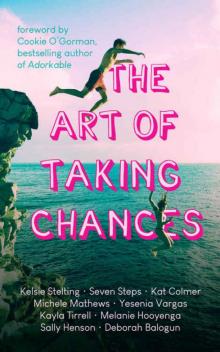 The Art of Taking Chances
The Art of Taking Chances The Butterfly Box_A SASS Anthology
The Butterfly Box_A SASS Anthology Harlan County Horrors
Harlan County Horrors![Afternoon Tea Mysteries [Vol Three] Read online](http://i1.bookreadfree.com/i2/04/12/afternoon_tea_mysteries_vol_three_preview.jpg) Afternoon Tea Mysteries [Vol Three]
Afternoon Tea Mysteries [Vol Three]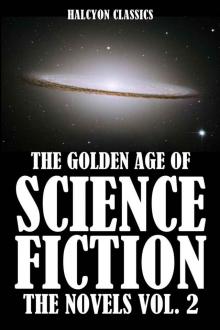 The Golden Age of Science Fiction Novels Vol 02
The Golden Age of Science Fiction Novels Vol 02 Ellora's Cavemen: Jewels of the Nile III
Ellora's Cavemen: Jewels of the Nile III